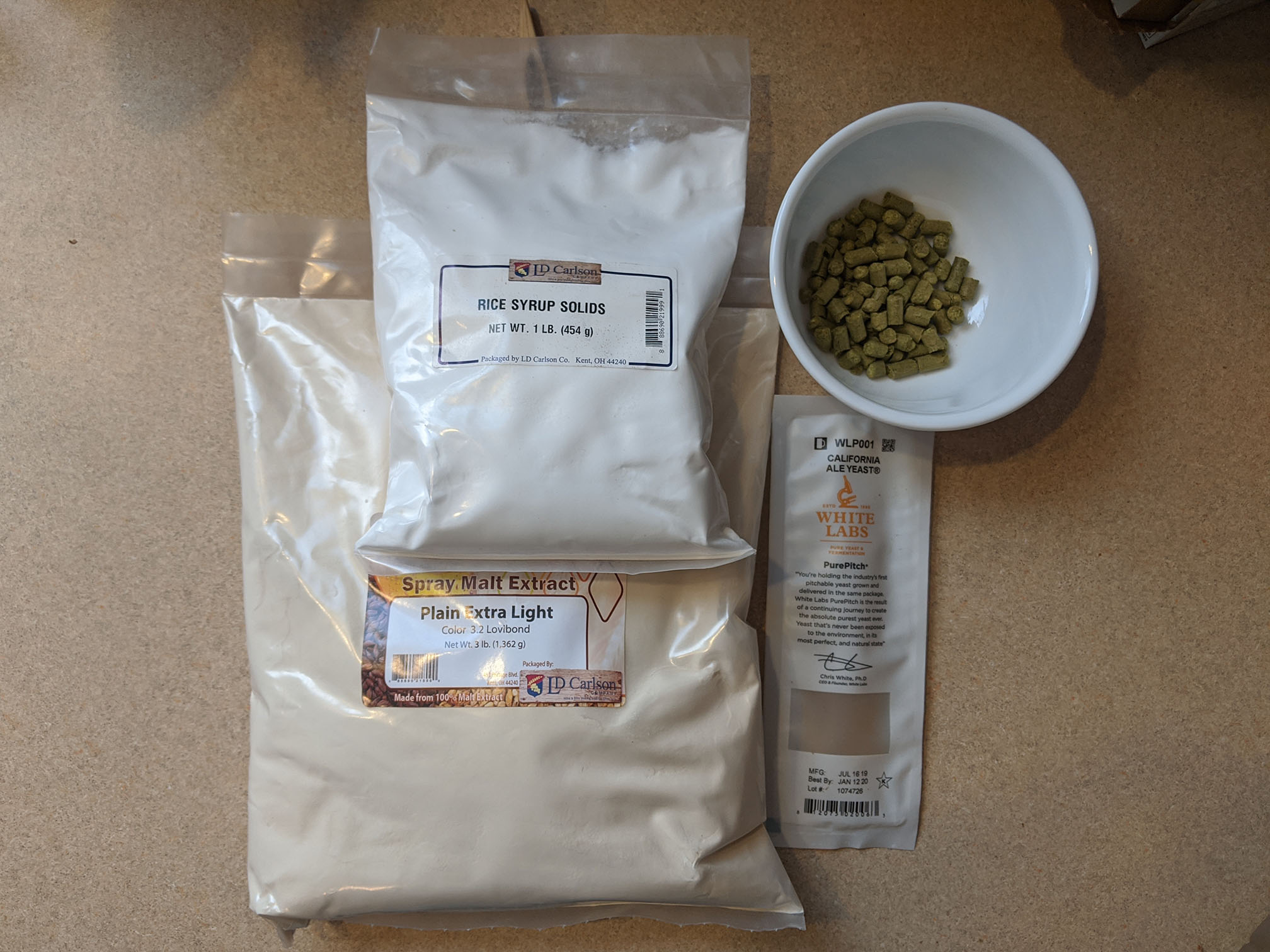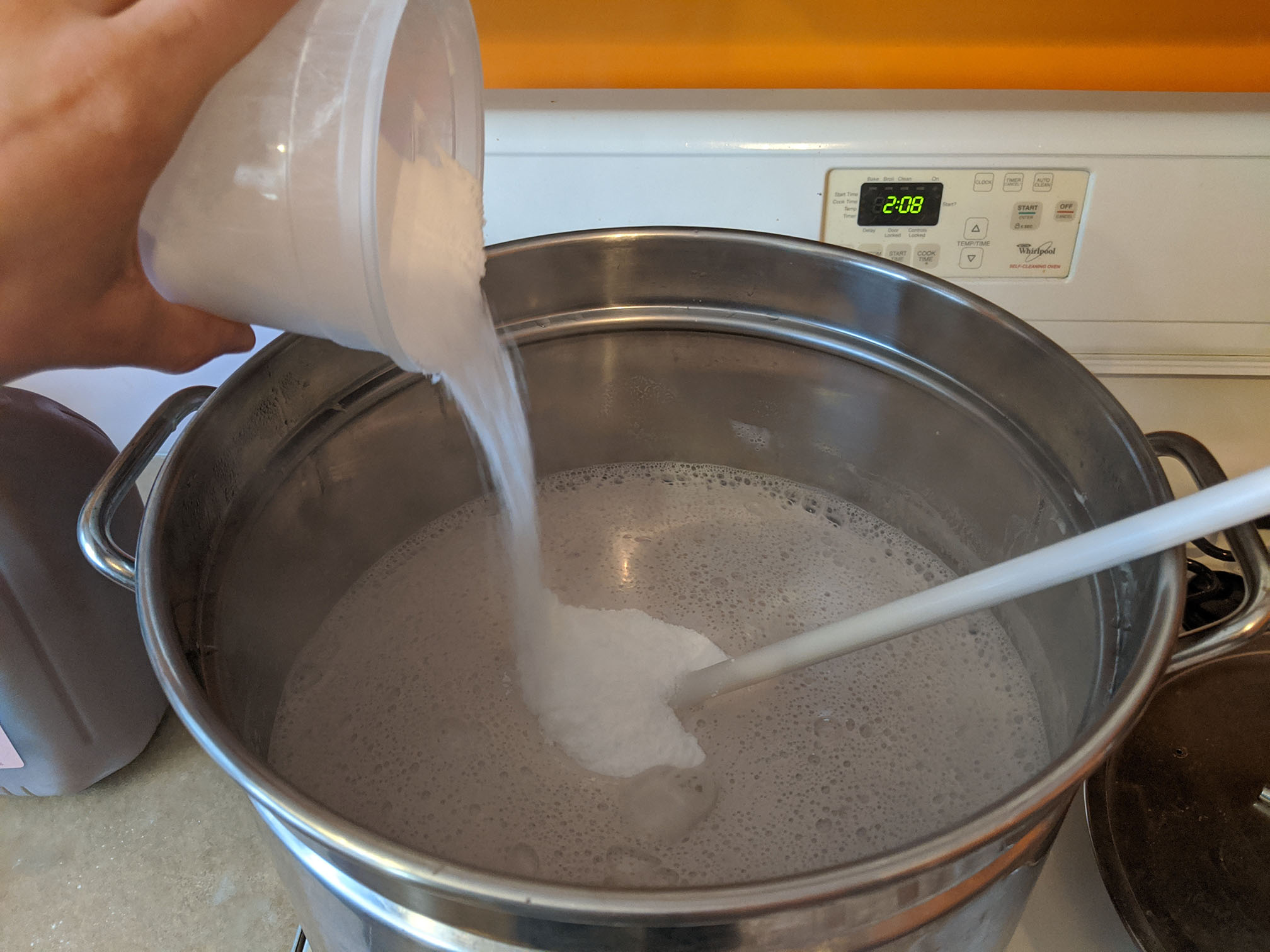Cream Ale
by Ben Centra
I don’t see too many examples of cream ales in the craft beer scene. Maybe it stands in stark flavor contrast to strong sours, IPAs, and stouts. Maybe it lacks the estery, spicy notes of an equally light Belgian golden ale. Maybe it’s the similarity to American macro lagers, with its light body and the addition of corn or rice to the mash. But if you’re looking for an easy-to-brew beer that’s light and refreshing, the cream ale is for you.
Genessee Cream Ale, a commercial cream ale from my college town of Rochester, NY. Photo by Chris Waits.
There’s no cream in a cream ale, nor is there lactose like in a milk stout. The “creamy” taste can be attributed to the the use of adjuncts such as corn or rice in the mash, often around 20% of the grain bill, and the use of cold-conditioning to further subdue the malt and yeast flavors. The result is a pale-colored, light-bodied, lower-ABV, easy-drinking ale.
Like many of these recipes, this one is also adapted from Brewing Classic Styles by Jamil Zainasheff and John Palmer.
Specs
| Style | Cream Ale (BJCP 1C) |
| Recipe Type | Extract |
| Batch Size | 3 Gallons |
| Original Gravity | 1.054 |
| Final Gravity | 1.014 |
| ABV | 5.3% |
| Color | 4°L |
Ingredients
The ingredients for a cream ale: malt extract, rice syrup, hops, and yeast.
| Fermentables | ||
|---|---|---|
| Kind | Amount | Color (SRM) |
| Extra Light Dry Malt Extract (DME) | 3 lb | 3°L |
| Rice Syrup Solids | 14.5 oz | 0°L |
| Amber Malt Extract | 4 oz | 8°L |
| Hops | |||
|---|---|---|---|
| Kind | Amount | % AA | Time |
| Liberty | 0.5 oz | 4.5% | 60 min |
| Liberty | 0.25 oz | 4.5% | 1 min |
| Yeast | |
|---|---|
| Kind | Amount |
| White Labs WLP001 “California Ale” | 1 package |
This cream ale goes the route of adding rice syrup solids for a color-free sugar addition. To hit my target ABV I added a little extra amber malt extract, since it’s what I had on hand. Feel free to leave it out, or go for a lighter extract instead to get the lightest color possible.
Recipe
This really is a quick and easy recipe. Start by bringing 2.65 gallons of water to a boil. Once boiling, turn off the heat and stir in the malt extrat and rice syrup. Bring the wort right back to a boil and add the first round of Liberty hops, boiling for an hour. With one minute left in the boil, add the remaining hops and give the wort a good stir.
Nothing easier than stirring in malt extract and rice syrup solids!
Remove the kettle from the heat and chill to about 72°F. Check your gravity, then top up the wort to 3 gallons (or whatever it takes to hit your target starting gravity). Once you’re satisfied, transfer the wort to your fermenter and pitch the yeast.
Let the beer ferment in primary for a week, then rack to secondary for another week. Optionally, chill your wort (50°F or below) for a few days before bottling to clarify. Bottle with 1oz of priming sugar per gallon, then let it condition for another two weeks before drinking.
I was a little lax with this beer. I didn’t cold-condition the beer before bottling. I didn’t even rack to secondary, I just left it in my primary fermenter for two weeks (I ran out of large buckets). But I think it turned out just fine!
Result
The final product: a golden, sweet, light-bodied ale!
I’m really happy with the final product on this recipe. Despite not cold-conditioning or using Whirlfloc during the boil, the beer is still mostly clear in the glass. The rice makes the beer sweet without being overly malty, and the Liberty hops don’t dominate on the finish. It may be a “simple” beer, but it really is enjoyable.
| Appearance | Mostly clear, golden color, white head, not too frothy. |
| Aroma | Sweet, sugary, creamy, buttery, like a macro lager with no off-notes. |
| Mouthfeel | Thin but not watery, smooth, no bite, on the dry side. |
| Flavor | Bready sweet, cake-y almost, gentle bitter finish, light, simple. |
| Overall | Sweet but not malty, bitter but not hoppy, light but flavorful. Simple, but well balanced. |
Perhaps cream ales in general aren’t something to write home about. But this recipe certainly is easy to make and easier to drink. If you’re looking for a break from stronger or complex beer styles, then look no further than the cream ale! Ok, maybe look a little further to English styles like the dark mild, which are also light but flavorful.
I had a few ideas to try in the future for this recipe. Perhaps adding a little CaraPils malt to the grain bill would give the beer a better head. Maybe it could be hopped a little more, like a Czech pilsner. Or maybe swapping the American yeast for a Belgian strain would turn it into a nice table beer. An easy to brew recipe like this could make a great test bed for experimentation!
Subscribe via RSS




